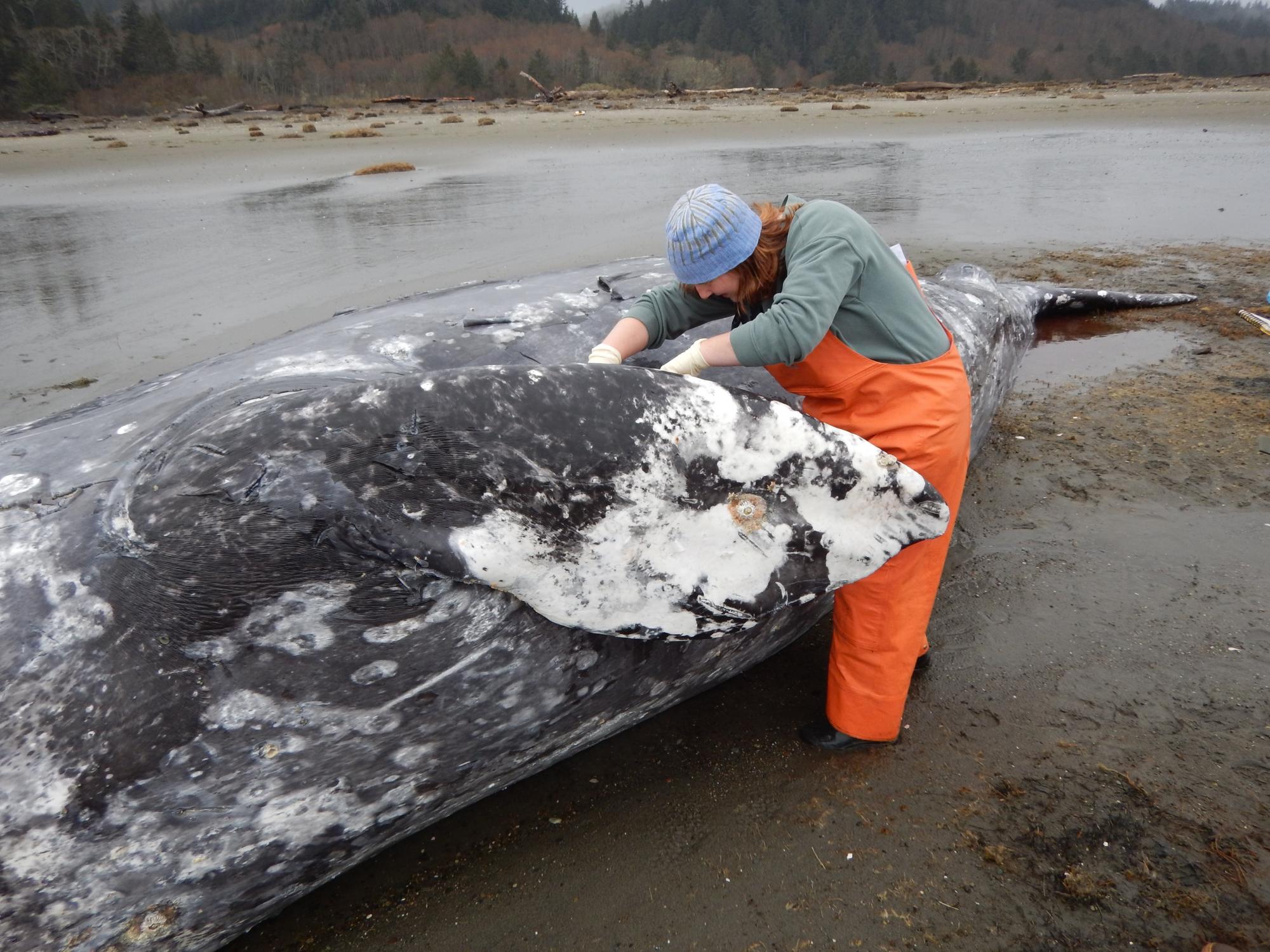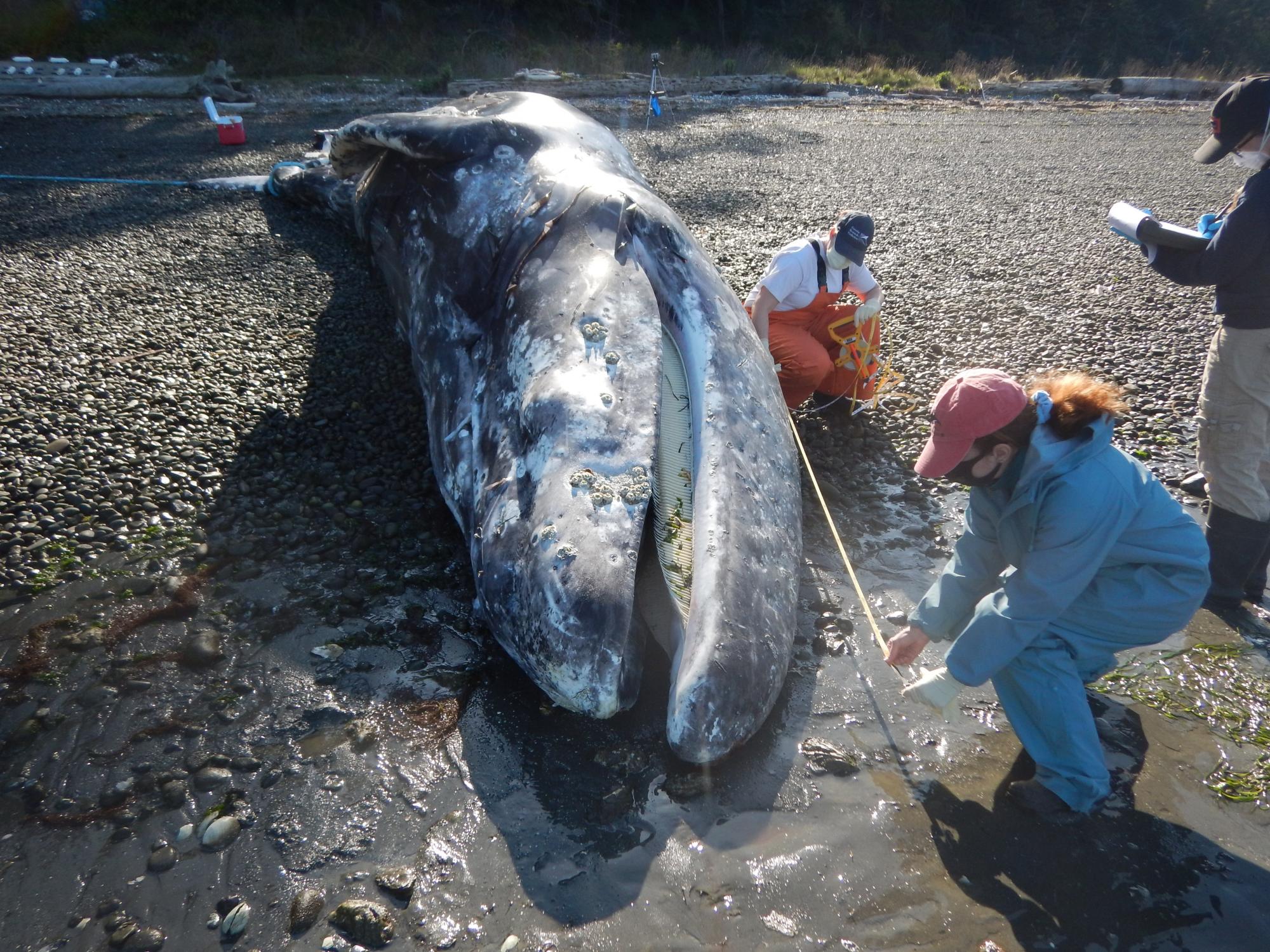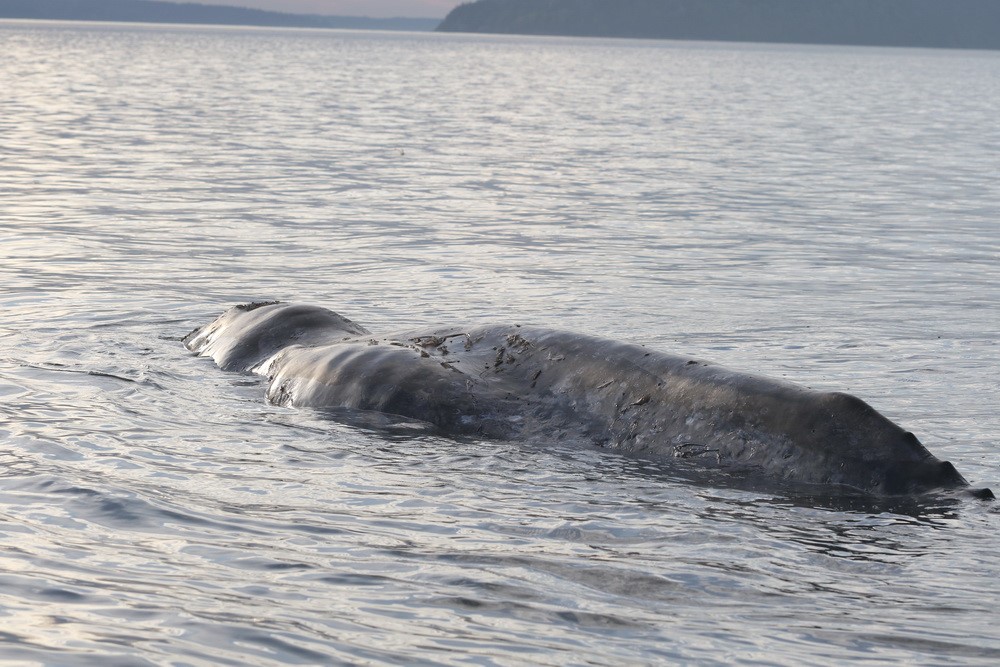After a record number of gray whale mortalities in WA in 2019 during the ongoing Unusual Mortality Event (UME), Cascadia and other stranding network members are keeping a particularly close eye on the number of strandings and their causes this year. So far, three dead gray whales have been recorded in WA in 2020—necropsies were conducted on two of these (both juveniles) and both showed signs of nutritional stress, similar to many of the whales that stranded here in 2019. Through mid-April 2019, we had seven dead gray whales, so strandings appear to be down from last year but it is still early and there may be more dead gray whales on the outer coast not being reported this year due to closures related to the novel coronavirus.
We also know there are a number of live gray whales in unusual areas of Puget Sound and some in poor condition so we may be seeing some additional mortalities in the near future. On 14 April, for example, a live gray whale became beached on the shallow Snohomish Delta near Everett at low tide. Cascadia was able to conduct a response to document this individual and its condition and stay with it until it freed itself on the incoming tide. It was extremely emaciated, and its long-term prognosis is not good. Other whales in poor condition have been sighted in inland waters over the last few weeks and we are still entering the peak period for mortalities in Washington, which typically spans from April through June.

Jessie Huggins conducting an examination of CRC-1789 on 27 March 2020. Restrictions due to the coronavirus have limited our examinations.

Examination while maintaining social distancing of CRC-1794 on 9 April 2020 that included personnel from Cascadia, Port Townsend Marine Science Center, and Dr. Stephanie Norman.

Emaciated gray whale that live stranded on the Snohomish River Delta on 14 April 2020 examined by John Calambokidis and documented free swimming once the tide came in later that evening.